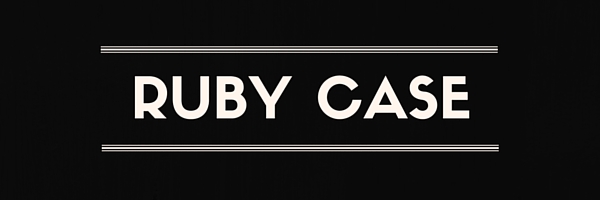Tag Archives for " case "

The Many Uses Of Ruby Case Statements
Whenever you need to use some if / elsif statements you could consider using a Ruby case statement instead. In this post, you will learn a few different use cases and how it all really works under the hood.

Note: In other programming languages this is known as a switch statement.
Ruby Case & Ranges
The case statement is more flexible than it might appear at first sight. Let’s see an example where we want to print some message depending on what range a value falls in.
|
1 2 3 4 5 6 7 8 9 10 11 12 |
case capacity when 0 "You ran out of gas." when 1..20 "The tank is almost empty. Quickly, find a gas station!" when 21..70 "You should be ok for now." when 71..100 "The tank is almost full." else "Error: capacity has an invalid value (#{capacity})" end |
I think this code is pretty elegant compared to what the if / elsif version would look like.
Ruby Case & Regex
You can also use regular expressions as your when condition. In the following example we have a serial_code with an initial letter that tells us how risky this product is to consume.
|
1 2 3 4 5 6 7 8 9 10 |
case serial_code when /\AC/ "Low risk" when /\AL/ "Medium risk" when /\AX/ "High risk" else "Unknown risk" end |
When Not to Use Ruby Case
When you have a simple 1:1 mapping, you might be tempted to do something like this.
|
1 2 3 4 5 6 |
case country when "europe" "http://eu.example.com" when "america" "http://us.example.com" end |
In my opinion it would be better to do this instead:
|
1 2 3 4 5 6 |
SITES = { "europe" => "http://eu.example.com", "america" => "http://us.example.com" } SITES[country] |
The hash solution is more efficient and easier to work with. Don’t you think?
How case works: the === method
You may be wondering how case works under the hood. If we go back to our first example, this is what is happening:
|
1 2 3 |
(1..20) === capacity (21..70) === capacity (71..100) === capacity |
As you can see, the condition is reversed because Ruby calls === on the object on the left. The === is just a method that can be implemented by any class. In this case, Range implements this method by returning true only if the value is found inside the range.
This is how === is implemented in Rubinius (for the Range class):
|
1 2 3 |
def ===(value) include?(value) end |
Source: https://github.com/rubinius/rubinius/blob/master/kernel/common/range.rb#L178
Procs + Case
Another interesting class that implements === is the Proc class.
You can learn more about procs & lambdas in my upcoming course: ‘Ruby Deep Dive’. Click here to get your free lesson now.
In this example I define two procs, one to check for an even number, and another for odd.
|
1 2 3 4 5 6 7 8 9 |
odd = proc(&:odd?) even = proc(&:even?) case number when odd puts "Odd number" when even puts "Even number" end |
This is what is really happening:
|
1 2 |
odd.===(number) even.===(number) |
Using === on a proc has the same effect as using call.
Conclusion
You have learned how the Ruby case statement works and how flexible it can be, now it’s your turn to start making the best use of it in your own projects. I hope you found this article useful!
Please share this post so more people can learn! 
